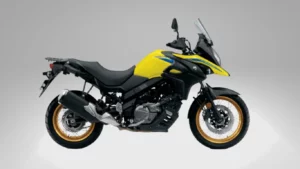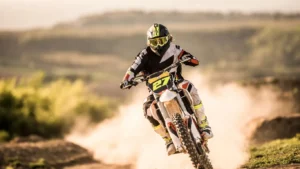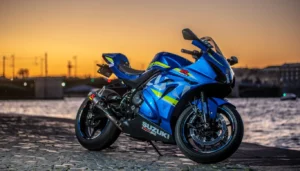Motorcycle riding is a popular mode of transportation and recreation around the world. Riding a motorcycle requires balance, coordination, and attention to detail to ensure a safe and enjoyable experience. While some people ride motorcycles for practical purposes, such as commuting to work or running errands, many others ride for the thrill and adventure of exploring the open road.
To ride a motorcycle, you need to learn basic skills such as starting, accelerating, braking, and turning. You also need to understand how to properly shift gears, use body position to control the motorcycle, and stay alert to potential hazards on the road. Learning to ride a motorcycle takes practice and dedication, but with proper training and protective gear, it can be a safe and enjoyable activity.
In addition to the practical aspects of motorcycle riding, many people enjoy the sense of freedom and adventure that comes with exploring new roads and destinations on a motorcycle. From scenic countryside roads to winding mountain passes, riding a motorcycle can provide a unique perspective and experience of the world around us.
While motorcycle riding can be a thrilling and rewarding activity, it’s important to approach it with caution and a focus on safety. Following traffic laws, wearing proper protective gear, and staying alert to potential hazards on the road are all important steps to ensure a safe and enjoyable ride.
How To Ride A Motorcycle?
Riding a motorcycle can be an exciting and enjoyable experience, but it requires proper training and safety precautions. Here are some basic steps to follow to get started:
Get proper training:
Yes, getting proper training is one of the most important steps when learning to ride a motorcycle. Taking a motorcycle safety course can provide you with the essential knowledge and skills to ride safely and confidently.
The course will cover topics such as motorcycle controls, riding gear, basic riding techniques, defensive riding strategies, and emergency maneuvers.
The course will also include a combination of classroom instruction and hands-on riding practice, allowing you to learn the theory and apply it in a safe and controlled environment.
In addition to the basic safety course, you can also consider advanced training courses to improve your riding skills and techniques.
Remember, riding a motorcycle is a serious responsibility, and proper training can help you stay safe on the road and avoid accidents.
Gear up:
Wearing proper riding gear is essential when riding a motorcycle. Motorcycle gear not only protects you from injuries in case of an accident but also helps you stay comfortable and focused while riding. Here are some essential gear items you should wear when riding a motorcycle:
Helmet: A helmet is the most important piece of safety gear you can wear when riding a motorcycle. It protects your head and brain from injuries in case of a crash. Make sure your helmet is DOT (Department of Transportation) approved and fits snugly on your head.
Jacket: A sturdy, protective jacket made of leather, textile or a combination of both can help protect your upper body in case of an accident. Look for a jacket with armor or padding on the elbows, shoulders, and back.
Gloves: Gloves protect your hands from injuries and provide a better grip on the motorcycle’s handlebars. Look for gloves that are made of durable materials and have padding on the palms and fingers.
Boots: Proper riding boots provide protection to your feet and ankles in case of a crash. Look for boots that are sturdy, provide good grip, and cover your ankles.
Pants: Motorcycle-specific pants with armor or padding can protect your legs in case of an accident. Look for pants made of leather or textile materials that offer abrasion resistance.
Remember to always wear your riding gear, even if you are only going for a short ride. This will help protect you from injuries and make your ride more comfortable and enjoyable.
Inspect the motorcycle:
Before riding a motorcycle, it’s important to inspect it thoroughly to ensure that everything is in good working order. This can help prevent accidents and mechanical issues while riding. Here’s a checklist of things to inspect on a motorcycle:
Tires: Check the tire pressure and look for any signs of wear, damage, or punctures.
Brakes: Test the front and rear brakes to make sure they are working properly. Look for any signs of wear on the brake pads or discs.
Lights: Check the headlights, taillights, brake lights, and turn signals to make sure they are working correctly.
Fluids: Check the oil level, coolant level, brake fluid level, and other fluids as recommended by the manufacturer.
Chain or belt: Inspect the chain or belt to make sure it is properly adjusted and lubricated.
Controls: Check the throttle, clutch, and brake cables to make sure they are functioning smoothly.
Suspension: Inspect the forks and shocks for any signs of damage or leaks.
Kickstand: Make sure the kickstand is secure and working properly.
Fuel: Check the fuel level and make sure there are no leaks.
If you notice any issues during the inspection, address them before riding the motorcycle. It’s also a good idea to have regular maintenance performed on the motorcycle, such as oil changes and tune-ups, to keep it in good working order.
Mount the motorcycle:
Mounting a motorcycle properly is essential for maintaining balance and control while riding. Here are the basic steps to mount a motorcycle:
- Stand on the left side of the motorcycle with the kickstand down and the motorcycle in neutral gear.
- Hold the handlebars with your left hand and the left handgrip with your right hand.
- Put your left foot on the footpeg and keep your right foot on the ground.
- Lift the motorcycle up using your left hand while keeping your right hand on the handgrip.
- Swing your right leg over the motorcycle and sit down on the seat.
- Put both feet on the footpegs and keep your body centered over the motorcycle.
- Adjust the mirrors and make sure you have a clear view of the road behind you.
- Put the motorcycle in gear (if it’s not already) and prepare to ride.
Remember to keep the motorcycle balanced and stable while mounting. If the motorcycle feels too heavy or unsteady, ask for help or practice in a safe and controlled environment until you feel comfortable.
Also, be sure to keep both feet on the ground until you are ready to lift the motorcycle off the kickstand.
Start the engine:
Starting a motorcycle’s engine depends on the type of motorcycle and the manufacturer’s instructions. Here are the basic steps to start a motorcycle:
- Turn the key to the “on” position to activate the electrical system.
- Make sure the motorcycle is in neutral gear. Some motorcycles require the clutch lever to be pulled in to start the engine.
- Turn the fuel valve to the “on” position. Some motorcycles have automatic fuel valves.
- Engage the kill switch if it is disengaged.
- Press the starter button or kickstart the engine. If using the starter button, make sure the motorcycle’s battery is sufficiently charged.
- Rev the engine a few times to warm it up.
- Once the engine is warmed up, you can begin riding.
Always refer to the motorcycle’s owner manual for specific instructions on starting the engine, as different motorcycles may have different starting procedures. Be sure to follow proper safety guidelines and use caution when starting the engine.
Shift gears:
Shifting gears on a motorcycle is an essential skill to learn and will allow you to control the speed and power of the motorcycle. Here are the basic steps for shifting gears on a motorcycle:
- While riding, use the clutch lever to disengage the clutch by pulling it towards you.
- Use your left foot to shift up or down a gear by pressing the shift lever located on the left side of the motorcycle.
- As you shift up, release the clutch slowly while simultaneously twisting the throttle to maintain power and speed.
- As you shift down, release the throttle slightly and allow the engine speed to decrease before releasing the clutch.
- Repeat the process of shifting gears as necessary based on your speed and road conditions.
It’s important to practice shifting gears in a controlled environment before riding in traffic.
Remember to always be aware of your surroundings and road conditions while riding and shift gears accordingly.
Keep in mind that some motorcycles may have different gear patterns, so always refer to the owner’s manual for specific instructions.
Accelerate and brake:
Accelerating and braking are essential skills to learn when riding a motorcycle. Here are the basic steps for accelerating and braking:
Accelerating:
Gradually twist the throttle located on the right handlebar to increase the engine speed and accelerate the motorcycle.
As you accelerate, lean forward slightly to maintain balance and control.
Increase your speed gradually and be aware of road conditions and traffic.
Shift gears as necessary to maintain a comfortable speed.
Braking:
- Use the rear brake pedal located on the right footpeg to slow down gradually.
- If you need to stop quickly, use both the front and rear brakes by squeezing the brake levers located on the right and left handlebars.
- As you brake, lean back slightly to maintain balance and control.
- Slow down gradually and be aware of road conditions and traffic.
Remember to always brake and accelerate smoothly and gradually to avoid sudden changes in speed or loss of control. Additionally, it’s important to practice accelerating and braking in a controlled environment before riding in traffic. Be sure to also follow traffic laws and use caution while riding.
Use proper body position
Proper body position is important for maintaining balance and control while riding a motorcycle. Here are some basic tips for maintaining proper body position:
- Keep your head up and eyes forward, looking ahead to anticipate road conditions and traffic.
- Keep your upper body relaxed and centered over the motorcycle.
- Grip the handlebars with a firm, but not tight, grip.
- Keep your knees and elbows bent to absorb bumps and road irregularities.
- Shift your weight as necessary to maintain balance and control.
- Lean into turns by shifting your weight towards the inside of the turn and looking through the turn towards your intended path.
- Keep your feet on the footpegs and avoid dragging them on the ground.
Remember to practice proper body position in a controlled environment before riding in traffic.
Additionally, different types of motorcycles may require slightly different body positions, so always refer to the owner’s manual for specific instructions. Be sure to also wear appropriate protective gear and follow traffic laws while riding.
Stay alert
Staying alert is crucial for safe and enjoyable motorcycle riding. Here are some basic tips for staying alert while riding:
- Stay focused on the road ahead and be aware of your surroundings, including other vehicles, pedestrians, and road conditions.
- Avoid distractions such as texting, eating, or adjusting the radio while riding.
- Stay hydrated and well-rested before riding to help maintain mental alertness.
- Avoid riding under the influence of drugs or alcohol, which can impair your judgment and reflexes.
- Take breaks as needed to avoid fatigue and maintain focus.
- Be prepared for unexpected situations, such as sudden changes in weather or road conditions.
- Use defensive riding techniques, such as maintaining a safe following distance and being visible to other drivers.
Remember that being alert and aware of your surroundings is crucial for safe motorcycle riding. Always stay focused on the road ahead and anticipate potential hazards. Additionally, be sure to follow traffic laws and use caution while riding.
Practice, practice, practice
Practice is key to becoming a skilled and confident motorcycle rider. Here are some tips for practicing effectively:
- Start in a controlled environment, such as an empty parking lot or a closed course, to practice basic skills such as shifting gears, accelerating, and braking.
- Gradually increase your speed and complexity of maneuvers as your skills improve.
- Practice riding in different road and weather conditions, such as on gravel or in the rain, to prepare for unexpected situations.
- Practice defensive riding techniques, such as maintaining a safe following distance and being visible to other drivers.
- Take a motorcycle safety course to improve your skills and knowledge of safe riding practices.
- Ride with experienced riders who can provide guidance and feedback.
- Regularly maintain your motorcycle to ensure that it is in good condition and functioning properly.
Remember that practice is a continuous process and that you can always improve your skills with consistent effort and dedication.
Be sure to also follow traffic laws and use caution while riding. With practice and proper safety measures, motorcycle riding can be a safe and enjoyable activity.
What not do while learning motorcycle riding?
Learning to ride a motorcycle can be an exciting and rewarding experience, but it’s important to also understand what not to do while learning to ensure your safety and the safety of others. Here are some things to avoid while learning to ride a motorcycle:
Don’t attempt to ride a motorcycle without proper training or experience. Taking a motorcycle safety course is essential for learning the basics of safe riding practices.
Don’t ride without wearing appropriate protective gear, such as a helmet, gloves, and durable clothing.
Don’t attempt to ride a motorcycle that is too large or powerful for your skill level. Choose a motorcycle that you can comfortably handle and control.
Don’t ride in adverse weather conditions, such as heavy rain or snow, until you have experience riding in those conditions.
Don’t ride under the influence of drugs or alcohol, which can impair your judgment and reflexes.
Don’t ride without a valid motorcycle license or proper registration and insurance.
Don’t attempt stunts or maneuvers beyond your skill level, which can result in serious injury or damage to your motorcycle.
Remember to always use caution and practice safe riding habits while learning to ride a motorcycle.
Be sure to also follow traffic laws and use common sense to avoid dangerous situations.
Tips for the first time motorcycle riders
Congratulations on starting your motorcycle riding journey! Here are some tips to help make your first time riding a motorcycle a safe and enjoyable experience:
Take a motorcycle safety course. A safety course will teach you the basics of motorcycle operation, riding techniques, and safety practices. This is the best way to start your riding journey.
Wear proper safety gear. This includes a DOT-approved helmet, eye protection, durable clothing, gloves, and boots that cover your ankles. Proper gear will protect you from injury in the event of a fall or accident.
Choose a motorcycle that suits your skill level. Select a motorcycle that is easy to handle and not too powerful for your level of experience. A small, lightweight motorcycle is a good choice for beginners.
Practice in a safe, controlled environment. Start by practicing in an empty parking lot or closed course to get a feel for the motorcycle and to practice basic skills like starting, stopping, and turning.
Focus on your riding technique. Keep your eyes on the road ahead, look where you want to go, and maintain a relaxed grip on the handlebars. Keep your body centered and avoid leaning too far into turns.
Ride defensively. Assume that other drivers don’t see you and stay alert for potential hazards. Maintain a safe following distance and be prepared to take evasive action if necessary.
Start slow and gradually build your skills and confidence. Don’t try to rush the process or attempt maneuvers beyond your skill level.
Remember that learning to ride a motorcycle takes time and practice, but with dedication and the right approach, it can be a safe and enjoyable experience. Be sure to also follow traffic laws and use caution while riding. Good luck and have fun!
How to choose best motorcycle to learn motorcycle riding
Choosing the best motorcycle to learn motorcycle riding on can help make your experience more enjoyable and safer. Here are some tips to help you choose the best motorcycle for learning:
Choose a motorcycle with a smaller engine. A motorcycle with a smaller engine is easier to handle and control, making it a good choice for beginners.
Consider the weight of the motorcycle. A lighter motorcycle is easier to handle, particularly at low speeds, and is less likely to tip over.
Look for a motorcycle with a lower seat height. A lower seat height makes it easier to put your feet on the ground, which can be reassuring for new riders.
Choose a motorcycle with a standard riding position. A standard riding position provides a comfortable, upright posture that is easy to maintain and helps with control.
Look for a motorcycle with good handling and stability. Good handling and stability are important for building confidence and making learning to ride more enjoyable.
Consider a used motorcycle. A used motorcycle can be a more affordable option and may have already been broken in, making it easier to ride.
Test ride the motorcycle. Before making a final decision, test ride the motorcycle to make sure it feels comfortable and easy to handle.
Remember that learning to ride a motorcycle takes time and practice, and choosing the right motorcycle can help make the process easier and more enjoyable. Be sure to also wear proper safety gear and take a motorcycle safety course to learn the basics of safe riding practices.
Conclusion
Learning to ride a motorcycle can be an exciting and rewarding experience, but it’s important to approach it with caution and a focus on safety.
Starting with proper training and protective gear, choosing a suitable motorcycle, and practicing basic skills in a controlled environment are all important steps to ensure a safe and enjoyable experience.
Remember to ride defensively, maintain proper body position, and stay alert while on the road. With dedication and practice, you can become a skilled and confident motorcycle rider.






